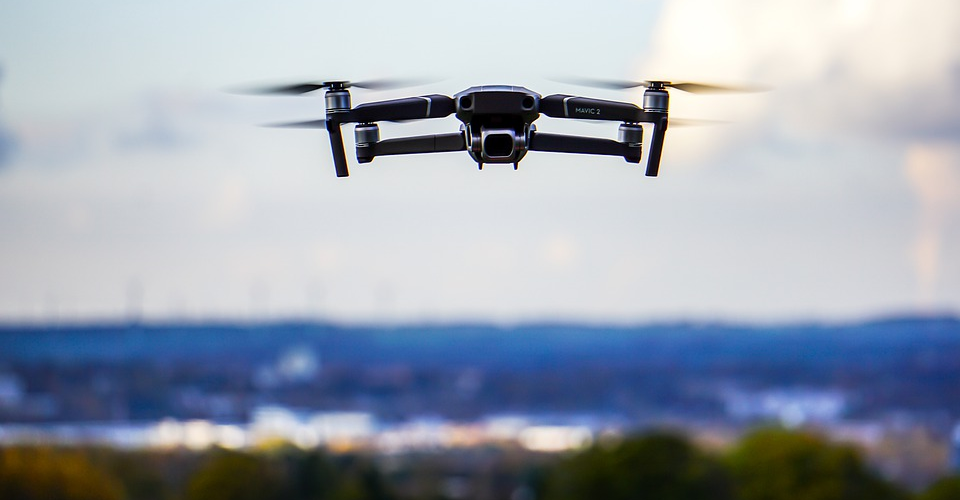DJI Comparison: Mavic Mini vs. Mavic Air vs. Mavic 2 vs. Spark
Over the last several years, Chinese brand DJI has cemented its position as the global leader of the market for prosumer drones. DJI isn’t just known for their excellent quality drones that push the boundaries of innovation – they also offer a wide variety of drones suitable for different budgets and applications.
With ultra-portable drones being particularly trendy, DJI has released a barrage of foldable and lightweight drones that have generally been met with success. Having lots of choices is good, of course, but it can also make it hard for first-time drone buyers to pick which drone they should go for. If this sounds like you, then check out our detailed guide to the DJI ultra-portable drones.
Overview
The Spark was released in May 2017 shortly after the launch of the original Mavic Pro. Back then, it was the most beginner-friendly drone that DJI had released. Not only did it have a budget-friendly price tag, but it was also incredibly small and had a couple of unprecedented features that would surely appeal to a mass audience, such as hand gesture control.
The Mavic Air was released in early 2018. It benefitted from the improved ESCs of the Mavic Pro Platinum while retaining the same ultra-portable design with the streamlined body and foldable propeller arms. The Mavic Air was also relatively cheap at the time of its release, considering that it came with a 4K camera and an obstacle avoidance system. Until now, the Mavic Air is one of the most successful drones ever developed by DJI.
The Mavic 2 drones were released at the tail-end of 2018. There were two variants to the Mavic 2 – the Mavic 2 Pro and the Mavic 2 Zoom. Each of the Mavic 2 drones featured a camera feature that the first of its kind in the ultra-portable drone market. Instead of aiming for mass appeal, the Mavic 2 drones were more geared towards professional users with its superior features and a quite intimidating price tag. Almost a year after they were first launched, the Mavic 2 drones remain as some of the best ultra-portable drones.
The Mavic Mini was released near the end of 2019 – just a few weeks ago. True to its name, it is the smallest and lightest of the Mavic drones. It also costs less than half the Mavic Air, instantly giving it a huge chance of achieving a similar level of success. It’s somewhat inferior to the other Mavic drones in terms of hardware, but it’s an excellent drone for beginners and those who are not willing to spend close to $1000 to try out a drone.
Design, build, and portability
| Parameter | Spark | Mavic Air | Mavic 2 Pro | Mavic 2 Zoom | Mavic Mini |
|---|---|---|---|---|---|
| Size (folded) | Does not fold | 168 x 83 x 49 mm | 214 x 91 x 84 mm | 214 x 91 x 84 mm | 140 x 82 x 57 mm |
| Size (unfolded) | 143 x 143 x 55 mm | 168 x 184 x 64 mm | 322 x 242 x 84 mm | 322 x 242 x 84 mm | 160 x 202 x 55 mm |
| Weight | 300 grams | 403 grams | 907 grams | 905 grams | 249 grams |
The Spark, the only non-Mavic drone in this list, is still considered one of the lightest drones created by DJI. At only 300 grams, the Spark just barely goes above the minimum takeoff weight that requires pilots to register the drone with the FAA. It’s also an incredibly small drone – the Spark is still smaller than all the Mavic drones when they are unfolded.
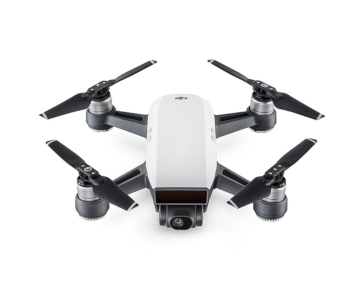
However, Spark lacks the distinct characteristic of Mavic drones – foldable propellers. Without this advantage, the Spark loses out on portability.
The Mavic Air redefined ultra-portable drones when it was first launched. When it was released, the Mavic Air was the smallest and lightest drone to have a 4K camera. Its predecessor, the Mavic Pro, may have introduced the concept of ultra-portable drones to the market, but it was with the Mavic Air that DJI showed how far they have come with the miniaturization of drone technology.
The Mavic 2 drones took a vastly different approach. Instead of going for size and weight reduction, DJI tried to cram as much technology into drones that can still be considered ultra-portable but aren’t nearly as small and light as the Mavic Air. Both the Mavic 2 Pro and the Mavic 2 Zoom have the same dimensions and weights, and they remain the heaviest and largest members of the DJI Mavic family.
If we consider the Mavic Air as a refinement of the ultra-portable drone formula, then the Mavic Mini is its perfection. The Mavic Mini is the smallest and lightest drone to have ever been created by DJI, besides the Ryze Tello. At 249 grams, the Mini just falls 1 gram below the weight limit that requires FAA drone registration. With that little inconvenience out of the way, the Mavic Mini is sure to appeal to people who just want to be able to fly their drones out of the box without the need to subscribe to federal regulations.
Spark: +0 for portability
Mavic Air: +3 for portability
Mavic 2 Pro: +1.5 for portability
Mavic 2 Zoom: +1.5 portability
Mavic Mini: + 4 for portability
Camera
| Parameter | Spark | Mavic Air | Mavic 2 Pro | Mavic 2 Zoom | Mavic Mini |
|---|---|---|---|---|---|
| Sensor | 1/2.3” CMOS | 1/2.3” CMOS | 1” CMOS | 1/2.3” CMOS | 1/2.3” CMOS |
| Video resolution | 1080p @ 30 fps | 4K @ 30 fps | 4K @ 30 fps | 4K @ 30 fps | 2.7K @ 30 fps |
| Image resolution | 12 MP | 12 MP | 20 MP | 12 MP | 12 MP |
| FOV | 81.9° | 85° | 77° | 83° @ 24mm | 83° |
| Aperture | f/2.6 | f/2.8 | f/2.8 – f/11 | f/2.8 – f/3.8 | f/2.8 |
| ISO range | 100 – 3200 | 100 – 3200 | 100 – 12800 | 100 – 3200 | 100 – 3200 |
| Shutter speed | 2 – 1/8000 | 8 – 1/8000 | 8 – 1/8000 | 8 – 1/8000 | 8 – 1/8000 |
| Slow-motion | None | 1080p @ 120 fps | 1080p @ 120 fps | 1080p @ 120 fps | 1080p @ 60 fps |
| RAW/DNG | None | Yes | Yes | Yes | No |
| HDR mode | None | Yes | Yes | Yes | No |
DJI drones are known to be some of the best camera drones in the market, and none of the drones in this list will disappoint. When the DJI Spark was launched, it was a product that was geared almost exclusively towards casual or beginner users. The 1080p camera was by no means professional-grade, but it had a couple of nice features for taking selfie-style photos and fun automatic flight modes. Slow-motion capabilities, HDR mode, and an option for RAW/DNG format photos were probably not a priority for the Spark.
The camera of the Mavic Air wasn’t much of a surprise, if only because it was very similar to what the Mavic Pro had. Again, it was still impressive that a drone as small as the Mavic Air had a 4K camera and can capture slow-motion videos at 1080p. It also had a slightly higher field-of-view compared to the Spark and can capture RAW/DNG and composite HDR photos. In a way, the Mavic Air was good enough to be considered for professional use, although it would probably land near the bottom of the pile in such a selection.
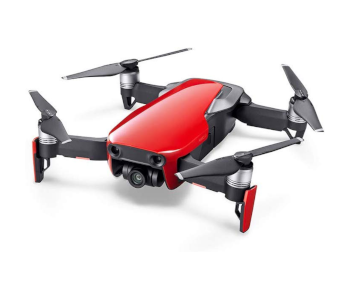
The Mavic 2 Pro took the idea of an ultra-portable drone camera to the next level. With a Hasselblad camera with 1” CMOS sensor, the Mavic 2 Pro easily claimed the title of being the most powerful ultra-portable camera drone – a title it has not renounced even today.
The Mavic 2 Pro’s camera had a Wide Dynamic Range, a more extensive color profile, and can capture detail at a level that is comparable with many of today’s top professional-grade cameras. It also has a larger ISO range and an adjustable aperture, allowing it to perform exceptionally well in a variety of lighting conditions. If we’re looking at camera specs alone, the Mavic 2 Pro undoubtedly rises to the top of this selection.
The Mavic 2 Zoom had features that were also unprecedented, although its approach was quite different. Its camera sensor was the same size as those found in the Mavic Air and Spark, so resolution wasn’t its strongest suit. What it did have was a zoom lens capable of 2x optical zoom. This was further augmented by a 4x digital zoom feature, giving the Mavic 2 Zoom an impressive 8x zoom capability.
This level of zoom opened up a wide range of new possibilities for drone photography and filmmaking. Instead of having to fly close to subjects, drone pilots can easily zoom in from a distance, creating an effect that’s arguably more dynamic. DJI also built the Mavic 2 Zoom with a couple of unique camera modes that were possible with its powerful zoom lens.
The Mavic Mini gives off no pretensions of being a professional-grade camera drone. Its 2.7K camera falls short of the 4K resolution, which seems to have become a standard in the last couple of years. Its slow-motion capability is capped at only 60 fps – a framerate which some people may not consider to be slow-motion at all. The drone also cannot shoot photos in RAW, and it does not have a bracketing mode for generating HDR images. All in all, the Mavic Mini is just a step above the Spark, which isn’t exactly a bad place to be.
Spark: +0 for camera
Mavic Air: +1 for camera
Mavic 2 Pro: +4 for camera
Mavic 2 Zoom: +3 for camera
Mavic Mini: +2 for camera
Gimbal
| Parameter | Spark | Mavic Air | Mavic 2 Pro | Mavic 2 Zoom | Mavic Mini |
|---|---|---|---|---|---|
| Stabilization technology | 2-axis mechanical gimbal | 3-axis mechanical gimbal | 3-axis mechanical gimbal | 3-axis mechanical gimbal | 3-axis mechanical gimbal |
| Tilt range | -85° to 0° | -90° to 17° | -90° to 30° | -90° to 30° | -90° to 20° |
| Pan range | N/A | -12° to 12° | -75° to 75° | -75° to 75° | -20° to 20° |
All the drones featured in this selection, with the exception of the Spark, are outfitted with 3-axis mechanical gimbals for superior image and video stabilization. The sole exception is the Spark, which was downgraded to a 2-axis gimbal perhaps because of technology limitations back when it was developed.
A 3-axis gimbal isn’t a huge surprise for the Mavic Air and the Mavic 2 drones. After all, DJI was already able to achieve the integration of a 3-axis gimbal in the similarly sized Mavic Pro. What was most surprising was the fact that the diminutive Mavic Mini came with the same gimbal. This evolution from the Spark to the Mavic Mini, two drones that are almost the same size and weight, speaks of the strides in technology that DJI has taken in the last two years.
Differentiating between the drones is then just a matter of looking at how much freedom of movement each gimbal offers. The two Mavic 2 drones are unequaled in this regard with extra-wide panning and tilting. Coming in at second place is the Mavic Mini, with a very slight panning advantage over the Mavic Air.
Spark: +0 for gimbal
Mavic Air: +1 for gimbal
Mavic 2 Pro: +3.5 for gimbal
Mavic 2 Zoom: +3.5 gimbal
Mavic Mini: + 2 for gimbal
Camera modes
| Parameter | Spark | Mavic Air | Mavic 2 Pro | Mavic 2 Zoom | Mavic Mini |
|---|---|---|---|---|---|
| ActiveTrack | Yes | Yes | Yes | Yes | No |
| Gesture control | Yes | Yes | No | No | No |
| TapFly | Yes | Yes | Yes | Yes | No |
| Quickshot modes | Rocket Dronie Circle Helix | Rocket Dronie Circle Helix Asteroid Boomerang | Dronie Helix Rocket Asteroid Boomerang Hyperlapse | Super Resolution Dolly Zoom Dronie Helix Rocket Asteroid Boomerang | Rocket Dronie Circle Helix |
Camera modes are more than just a party trick – they can be what sets apart drones that come with similar cameras. With a little bit of creativity, these camera modes can be combined to create unique and highly dynamic aerial footage.
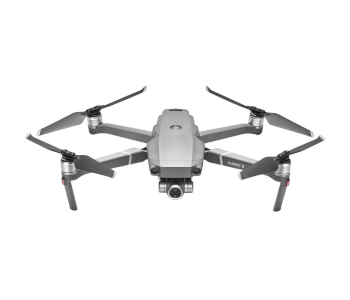
The Spark may have come pretty early in the era of ultra-portable drones, but it was one of the first drones to come with a set of camera modes that have set the standard for the later iterations of similar models. It was the drone that made the idea of controlling drones using hand gestures popular. It also had the first version of DJI’s signature Follow Me mode, the ActiveTrack, which made use of the drone’s optical sensors to identify a subject.
The Mavic Air followed in the same vein as the Spark since it mostly catered to the same market. It did have the advantage of having two additional camera modes – namely Asteroid and Boomerang. Again, these modes were a novelty at the time but have become very common nowadays.
The Mavic 2 Pro did away with hand gestures, perhaps because of its marketing towards professional use, opting instead for a heavily augmented list of autonomous camera modes. Among the best of these new modes is Hyperlapse, which allows drone filmmakers to integrate motion with time-lapse videos. The ActiveTrack feature that comes with the Mavic 2 Pro has also been upgraded to the 2.0 version, which comes with trajectory prediction.
The Mavic 2 Zoom has a lot going for it when it comes to camera modes. Its unique zoom capabilities allow it to have camera modes that no other drone has, such as Super Resolution and Dolly Zoom. For just these two new camera modes, the Mavic 2 Zoom already stands out from all the other Mavic drones.
After such an excellent run of drones with innovative camera modes, the Mavic Mini suddenly felt underwhelming. The most pronounced downgrade was the absence of the ActiveTrack feature, which is a favorite among lots of drone filmmakers. Also missing are the Tapfly and Course Lock modes, features that have been the hallmark of DJI drones. Lastly, the list of Quickshots for the Mavic Mini has been reduced to the set originally found in the Spark.
The sudden drop in the versatility of camera modes is jarring for the Mavic Mini, especially after DJI has added more and more modes for their ultra-portable drones over the years.
Spark: +1 for camera modes
Mavic Air: +2 for camera modes
Mavic 2 Pro: +3 for camera modes
Mavic 2 Zoom: +4 camera modes
Mavic Mini: +0 for camera modes
Controller
| Parameter | Spark | Mavic Air | Mavic 2 Pro | Mavic 2 Zoom | Mavic Mini |
|---|---|---|---|---|---|
| Transmission tech. | WiFi | Enhanced WiFi | OcuSync 2.0 | OcuSync 2.0 | Enhanced WiFi |
| Working frequency range | 2.4 and 5.8 GHz | 2.4 and 5.8 GHz | 2.4 and 5.8 GHz | 2.4 and 5.8 GHz | 2.4 and 5.8 GHz |
| Max transmission distance | 2 km | 4 km | 8 km | 8 km | 4 km |
| Controller battery capacity | 2970 mAh | 2970 mAh | 3950 mAh | 3950 mAh | 2600 mAh |
| Video feed resolution | 720p @ 30 fps | 720p @ 30 fps | 1080p @ 30 fps | 1080p @ 30 fps | 720p @ 30 fps |
Both the Spark and the Mavic Air have optional remote controllers. However, the experience of flying a drone using a smartphone app is highly inferior to that using a dedicated controller. To set a standard, we will judge the drones based on their remote controller performance.
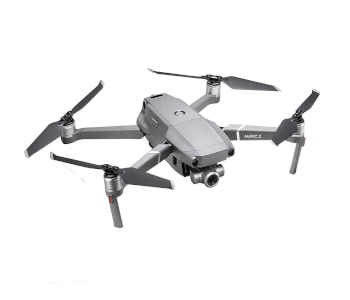
There’s a very distinct difference in the transmission that the five drones use, which have a direct effect on their effective range and resistance to interference. The Spark uses standard WiFi, which limits its range to only 2 kilometers. Both the Mavic Air and the Mavic Mini use an “enhanced” WiFi signal, doubling the range to 4 kilometers.
The problem with WiFi-based transmission, even with the enhanced version, is that they are highly prone to signal interference. Wherever you fly your drone, there’s bound to be another WiFi signal coming from another source. This can result in momentary loss of the video feed or worse, a temporary loss of control. Fortunately, these drones come with a return-to-home function which should kick in if the communication between the drone and remote controllers conks out.
Both the Mavic 2 Pro and Mavic 2 Zoom uses DJI’s patented OcuSync 2.0 technology. With this transmission, the Mavic 2 drones have an impressive effective range of 8 kilometers and can stream a 1080p real-time video feed. This is a massive upgrade to anything that DJI had developed prior and may be the blueprint for their next generation of professional-grade drones.
Despite this category being partly decided by the transmission range of each drone, we find that the 2-kilometer range of the Spark is more than enough if you’re bound by visual line-of-sight (VLOS) rules. These are incredibly small drones, and keeping track of them visually from more than a kilometer away is hard enough. Perhaps an 8-kilometer range may become useful in the future when drone regulations evolve, but for now, it is nothing more than a number with no practical use.
Spark: +0 for controller
Mavic Air: +1.5 for controller
Mavic 2 Pro: +3.5 for controller
Mavic 2 Zoom: +3.5 controller
Mavic Mini: +1.5 for controller
Flight performance
| Parameter | Spark | Mavic Air | Mavic 2 Pro | Mavic 2 Zoom | Mavic Mini |
|---|---|---|---|---|---|
| Max. groundspeed | 13.9 m/s | 19 m/s | 20 m/s | 20 m/s | 13 m/s |
| Flight modes | P-Mode Sport Mode | P-Mode Sport Mode | P-Mode Sport Mode Tripod Mode Cinematic Mode | P-Mode Sport Mode Tripod Mode Cinematic Mode | P-Mode Sport Mode CineSmooth Mode |
There are lots of ways to judge the flight performance of a drone, some of which cannot be captured by mere numbers. Factors to consider may include flight stability, braking distance, and responsiveness of controls, among others. Ultra-portable drones, by their very nature, are much more vulnerable to drifting by strong winds. However, this does take away the fact that all these drones are much more stable than they have a right to be – these drones will remain nailed in position unless wind conditions become extreme.
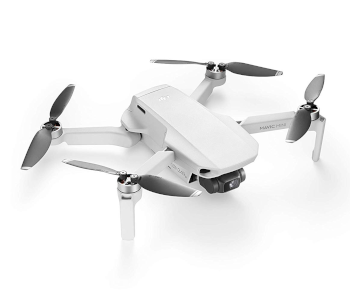
At a minimum, DJI drones have two modes: the default Positioning Mode, and a much faster Sport Mode. In Sport Mode, the DJI drones can fly at their top speeds but will have to disable their obstacle avoidance systems, if they have any. Both the Spark and Mavic Air are restricted to either of these two modes, although the Mavic Air has a significant advantage in speed.
The Mavic 2 drones, aside from being even faster than the Mavic Air, comes with two new flight modes. Under Tripod Mode, the controls for the movement of the drone become heavily dampened. The reduced sensitivity provides much better control, which is suitable for when you’re framing your shots or if you’re flying the drone indoors.
There’s also a Cinematic Mode, which reduces the sensitivity for both the drone and the gimbal. As you can imagine, this is an excellent mode for creating cinematic videos with perfectly smooth panning and tilting. With these two new flight modes, the Mavic 2 drones further prove how well-suited they are for professional filmmaking.
The Mavic Mini may not offer much in terms of speed since you can only expect so much propulsion out of such tiny propellers. What the Mavic Mini offers is its own take on the Tripod and Cinematic modes, called the “CineSmooth” mode. According to DJI, this mode “elongates the braking process,” which means that the drone is less prone to sudden brakes and changes in direction. It probably doesn’t do much to control gimbal movement, but it’s still a nice feature to smooth out those drone videos.
Spark: +0 for flight performance
Mavic Air: +1 for flight performance
Mavic 2 Pro: +3.5 for flight performance
Mavic 2 Zoom: +3.5 flight performance
Mavic Mini: +2 for flight performance
Battery
| Parameter | Spark | Mavic Air | Mavic 2 Pro | Mavic 2 Zoom | Mavic Mini |
|---|---|---|---|---|---|
| Capacity | 1480 mAh | 2375 mAh | 3850 mAh | 3850 mAh | 2400 mAh |
| Max flight time | 16 minutes | 21 minutes | 31 minutes | 31 minutes | 30 minutes |
The Spark’s short battery life was one of its most disappointing traits. At only 16 minutes under ideal conditions, you’d be lucky to get 12 or 13 minutes out of the Spark before you need to ground it again and swap another battery. This was especially frustrating and really hurt the potential of the Spark.
The Mavic Air came with a much larger battery and a 5-minute improvement in flight time. Five minutes is pretty long when it comes to drone flight, so this was a welcome change. Although 21 minutes still felt lacking, it wasn’t problematic enough to dampen the popularity of the Mavic Air.
When the Mavic 2 Pro drones were launched, they blew away all the previous standards for Mavic flight times. DJI designed the drones to take a slight hit on weight just so they can carry high-capacity batteries that gave them up to 31 minutes of flight time, one a single battery cycle. With the drones being marketed for professional use, the improvement in battery life was much needed to make them viable options for commercial drone pilots.
The Mavic Mini set a new gold standard for battery efficiency. By stripping down the weight and the features of the Mavic Mini, the drone was able to offer up to 30 minutes of flight time despite having a battery with the same capacity as the Mavic Air. This was a surprising outcome for the Mavic Mini, which bucked the trend of very small drones having very short flight times.
Spark: +0 for battery
Mavic Air: +1 for battery
Mavic 2 Pro: +3.5 for battery
Mavic 2 Zoom: +3.5 battery
Mavic Mini: +2 for battery
Obstacle avoidance
| Parameter | Spark | Mavic Air | Mavic 2 Pro | Mavic 2 Zoom | Mavic Mini |
|---|---|---|---|---|---|
| Coverage | Front | Front, back, bottom | Omnidirectional | Omnidirectional | None |
Lastly, there’s the good old obstacle avoidance – the trait that separates high-end drones from middling ones. By utilizing an array of sensors, it’s possible for drones to detect and avoid obstacles automatically, providing drone pilots with peace of mind.
It’s easy to see how the technology of obstacle avoidance evolved from the Spark to the Mavic 2. Every new iteration of the ultra-portable Mavic drones added a new dimension to obstacle avoidance, eventually culminating in the Mavic 2 drones and their omni-directional obstacle avoidance system. There are only a few drones available today that can equal this level of safety and awareness. This is enough reason for the Mavic 2 drones to take the top spot in this category – a position that might not be challenged anytime soon.
The lack of ANY obstacle avoidance in the Mavic Mini was a massive disappointment. Perhaps this was a concession that DJI had to take to keep the drone’s weight down to exactly 249 grams. However, it’s hard to imagine this drone not getting into a crash, especially if it was made to appeal to beginners. Propeller guards may be a poor substitute for an obstacle avoidance system, but it’s the best that we can recommend.
Spark: +1 for obstacle avoidance
Mavic Air: +2 for obstacle avoidance
Mavic 2 Pro: +3.5 for obstacle avoidance
Mavic 2 Zoom: +3.5 obstacle avoidance
Mavic Mini: +0 for obstacle avoidance
Price
| Parameter | Spark | Mavic Air | Mavic 2 Pro | Mavic 2 Zoom | Mavic Mini |
|---|---|---|---|---|---|
| Approx. price | $399 | $919 | $1729 | $1439 | $399 |
| Price | Check Price | Check Price | Check Price | Check Price | Check Price |
It’s easier to start this discussion from the top. The Mavic 2 Pro is one of the most expensive ultra-portable drones in the market today and the most expensive one in DJI’s selection of prosumer drones. At about $1700, it’s hard to imagine the Mavic 2 Pro appealing to anyone who’s not going to use it professionally or someone who’s a hardcore drone enthusiast.
The Mavic 2 Zoom, although cheaper by $300, is still in a price range that will not appeal to casual drone users. And perhaps that’s fine – the Mavic 2 drones are powerful enough to justify the price tag.
With a price tag just below $1000, consumers may be more psychologically predisposed to consider the Mavic Air. Its current price is practically the same as the price for which it was launched, and this is very telling of how the Mavic Air has been able to sustain its popularity for almost two years.
The Spark and the Mavic Mini have similar retail prices, although we imagine that there are lots of refurbished Sparks out there by now. These drones cost less than half of the Mavic Air, making them a very compelling purchase for people who may be on the lookout for the very first drones.
Spark: +3.5 for price
Mavic Air: +2 for price
Mavic 2 Pro: +0 for price
Mavic 2 Zoom: +1 price
Mavic Mini: +3.5 for price
Verdict
| Parameter | Spark | Mavic Air | Mavic 2 Pro | Mavic 2 Zoom | Mavic Mini |
|---|---|---|---|---|---|
| Portability | 0 | 3 | 1.5 | 1.5 | 4 |
| Camera | 0 | 2 | 4 | 3 | 1 |
| Gimbal | 0 | 1 | 3.5 | 3.5 | 2 |
| Camera modes | 1 | 2 | 3 | 4 | 0 |
| Controller | 0 | 1.5 | 3.5 | 3.5 | 1.5 |
| Flight performance | 0 | 1 | 3.5 | 3.5 | 2 |
| Battery | 0 | 1 | 3.5 | 3.5 | 2 |
| Obstacle avoidance | 1 | 2 | 3.5 | 3.5 | 0 |
| Price | 3.5 | 2 | 0 | 1 | 3.5 |
| TOTAL | 5.5 | 15.5 | 26 | 27 | 15 |
According to the results of our comparison, the Mavic 2 Zoom comes out on top, barely edging out the Mavic 2 Pro. There’s hardly any difference between the quality of these two, and it’s only because of the additional unique camera modes and the slightly lower price of the Mavic 2 Zoom that it wins the tight race.
Even without any points of comparison, the Mavic 2 Pro is, bar none, one of the best ultra-portable drones in the market today. Its camera quality is unequaled, and the omnidirectional obstacle avoidance (a feature it shares with the Mavic 2 Zoom) is a technology that’s tough to compete with.
Coming in at third and fourth are the Mavic Air and Mavic Mini, respectively, with the Air only barely winning the head-to-head. There’s very little similarity between these drones. The fact that their final scores are almost equal means that they each have something unique to offer.
The Mavic Air was last year’s success story. With its relatively affordable price, 4K camera, and new camera modes, the Mavic Air proved to be a hit with a sustained appeal.
The only credible competition to the Mavic Air was released by DJI just this year – the Mavic Mini. This incredibly small drone has a lot of people talking. Despite its size, it comes with a 3-axis gimbal, a 2.7K camera, a couple of nice camera modes. It’s not something a professional drone pilot would go for, but we expect the Mavic Mini to become a favorite for the coming holiday season.
Coming in last – with a very low score – is the DJI Spark. This drone may have been popular at its time, but it’s no Mavic. In fact, the Spark was very quickly overshadowed by the Mavic Air. As 2019 comes to a close, the time for the Spark may already be over. Although DJI hasn’t released an official statement yet about the Spark being discontinued, there no longer is a page for the Spark in the official DJI website.

